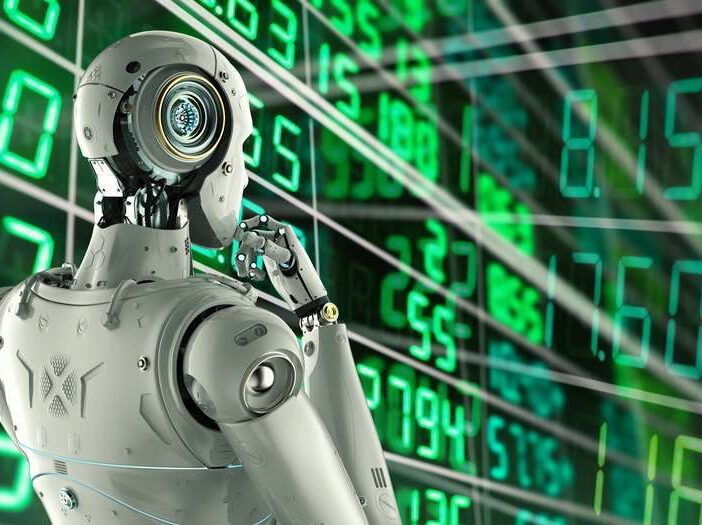The New York Stock Exchange is by far the world’s largest stock exchange by market capitalisation of its listed companies, which, in 2019, sat at a cool US$22.9 trillion.
It also happens to be a seriously impressive building, as Jim points out below. But behind the marble interior and high ceilings lies a dirty little secret, which you can use to your advantage…
Read on for more.
|
Until next time, |
|
Shae Russell, |
Taking Advantage of Wall Street’s Dirty Little Secret
 |
The New York Stock Exchange is housed in one of the most famous buildings in the world.
The current NYSE building was opened on 22 April 1903. It replaced an earlier structure that had stood on the same spot (the corner of Broad Street and Wall Street in New York’s downtown financial district) from 1865 to 1901.
The NYSE building was added to the United States’ National Register of Historic Places in 1977 and was named a designated landmark building for preservation purposes in 1985.
|
|
|
Source: Skyscraper.org |
The interior trading floor is no less impressive than the exterior facade. The trading floor takes up the entire city block between Broad Street and New Street. The 40-foot-high ceiling is supported by the structure itself without interior columns.
The trading floor consists of circular trading posts that each handle certain stocks. These trading posts are adorned with trading screens that provide price information and the logos of companies covered at each post.
The new digital reality
The trading floor was substantially redesigned in 2010 to keep abreast of the new digital reality. While there are still human designated market makers (DMMs) and brokers on the floor, there’s a lot less shouting than there used to be.
The DMMs are responsible for providing regular stock quotes and offering liquidity (similar to the old ‘specialist’ system). The brokers can trade for customers or for their own account. The DMMs and brokers are notable for their brightly-coloured jackets and trading badges.
Of course, the floor of the New York Stock Exchange is featured continually on business TV as an interview site and a powerful visual backdrop for market-moving events. The constant activity, flashing screens, iconic location, and colourful trader jackets make for quite a spectacle.
But…here’s Wall Street’s dirty little secret
It’s all a show.
The truth is that the stock exchange is like a museum with actors in costumes to create the look and feel of a bygone time. Yes, there is some live trading going on, but nothing that couldn’t easily be automated, just as 90% of the trading on most days is already automated.
The idea that human traders form some kind of liquidity buffer against disorderly markets is simply false.
If the traders are mostly just for show, and there is no natural source of liquidity, what’s left of the old process of price discovery and market making? Nothing.
Robots run the stock markets
Today, the markets are run by robots. It’s that simple.
When I refer to ‘robot’ trading, I should be clear on what I mean. I’m not talking about electronic order matching systems, which require a human buyer and a human seller.
I’m referring to matching systems with no human involvement at all. The buy decision is made by a computer. The sell decision is made by a computer. The order matching is done by a computer. The confirmation, settlement, and custody are all done by computers. There is no human intervention.
These computers are not facilitating the market — they are the market.
Who cares if markets are fully computerised?
Why shouldn’t stock trading get the same automated treatment as, say, airplanes or bank transfers, or, increasingly, automobiles?
The answer is that a stock exchange is not a car, plane or bank deposit. It is a place for point-of-sale price discovery. And price discovery is an inherently subjective and psychological process.
There’s nothing objective or automatic about a stock price. There’s no stock ‘autopilot’ that makes the right move in all cases. Stock markets are notorious for euphoric episodes driven by simple greed or a more nebulous ‘fear of missing out’ (FOMO).
They are also infamous for flash crashes and air pockets where indices drop 5% (or more) in a single trading day for no discernible reason. Robots can trade in these conditions, but they can’t make sense of them. Restoring rationality requires at least a few rational human actors and that’s exactly what’s missing today.
It’s true that robots can offer lower costs and faster execution by cutting out the human element. Robots can also perform reasonably well in calm and low volatility markets where execution is just a matter of adding to or reducing positions, or rotating from one sector to another when liquidity is ample.
The trouble with robotic stock trading
The problems arise when liquidity is not ample, when markets are gapping up or down, and when fear or euphoria is in the air. Humans (or at least some of them) can temper euphoria or overcome fear. This means selling when others are buying or stepping up to buy when everyone is selling.
These human reactions are not irrational. In fact, they help to signal that rationality is still around. A host of cognitive biases then come into play. Humans are subject to a herding dynamic. This can be dangerous when the herd is running for the exits, but it can be highly constructive when the herd decides to settle down. A human bucking the trend can set an example, gather adherents, and turn the tide.
Robots cannot perform these salutary roles. They can be programmed to execute at stop-loss levels and can be programmed to ‘buy low and sell high’ within pre-set boundaries. But, when stocks burst through their boundaries or when stop-loss limits are left in the rear-view mirror by violent price gaps, the computers just dump everything and shut down.
Robots cannot smell fear, cannot recognise opportunity, and cannot offer leadership to reverse disorderly market behaviour.
Beating the robots at their own game
The machines are in charge. If you want to survive and even prosper in these markets, you have to know how they are programmed, how they function and, most importantly, you have to beat them at their own game.
Markets are no longer human versus human. They’re not even human versus robot. Markets are robot versus robot. Yet, there’s still a niche for humans who can understand the algos and legally front-run the machines.
Robots may be cheaper, faster, and more efficient than humans. But they’re not smarter. That’s where you still have the edge. In the next edition of The Daily Reckoning Australia, I’ll reveal how to use that edge to your advantage.
|
All the best, |
 |
|
Jim Rickards, |
PS: Discover how some investors are preserving their wealth and even making a profit, as the economy tanks. Download your FREE report by clicking here.


